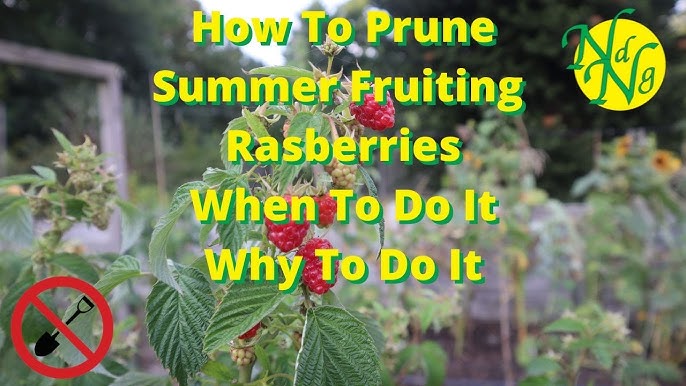Okay, so, I have a bunch of summer raspberry plants in my backyard, and let me tell you, these things grow like crazy! I planted them a couple of years ago, and they’ve been giving me tons of delicious berries. But, they also get super messy if you don’t keep them in check. That’s where pruning comes in. Today, I finally got around to tackling the jungle, and I figured I’d share my experience.
First things first, I put on my gardening gloves. Raspberry canes have these tiny thorns that can be a real pain, literally. Then, I grabbed my trusty pruning shears. Make sure they’re sharp, it makes the job so much easier and it’s better for the plants too.

The goal with pruning summer raspberries is to get rid of the canes that already produced fruit this year. They won’t produce again, and they just take up space and energy. You can spot them easily because they are brown, they are dry, and the bark is kind of loose. The new canes, the ones that will give fruit next year, are green and bendy.
I started by cutting all the brown canes right down to the ground. Just snip them off as close to the soil as possible. I worked my way through the patch, one cane at a time. It’s kind of satisfying, to be honest, seeing the pile of old canes grow and the raspberry patch getting neater.
Once I cleared out all the old canes, I took a look at the new, green ones. Even though they’ll fruit next year, some of them were super tall and floppy. I trimmed those down to about chest height, maybe a little taller. This helps keep the plants manageable and makes it easier to harvest the berries next year. I also thinned out some of the weaker-looking new canes. I left the strongest ones.
- Put on gardening gloves.
- Grab sharp pruning shears.
- Cut brown, old canes to the ground.
- Trim tall, new canes to chest height.
- Thin out weak new canes.
After all that cutting and trimming, I cleaned up the mess. I gathered all the cut canes and tossed them in my compost bin. You could also just throw them away, but I like to recycle what I can. I tied the new canes to the wire so that they will grow better next year.
The whole process took me maybe a few hours, but it was totally worth it. My raspberry patch looks so much better now, and I know it’ll be healthier and produce even more delicious berries next summer. Plus, it’s just nice to be outside, getting my hands dirty and taking care of my plants.
Things I have done:
- Pruned all the old, brown canes.
- Trimmed the new, green canes.
- Cleaned up the cut canes.
- Tied the new canes to the wire.
So, if you have summer raspberries, don’t be afraid to give them a good pruning. It’s not hard, and it really makes a big difference. Happy gardening!





















